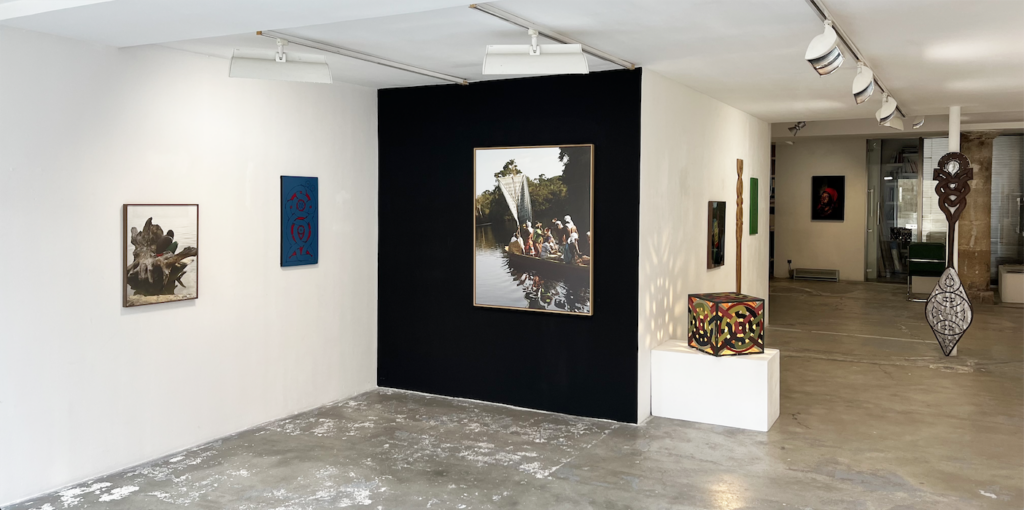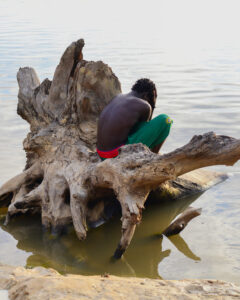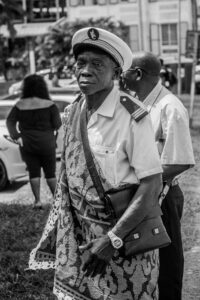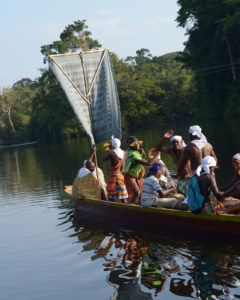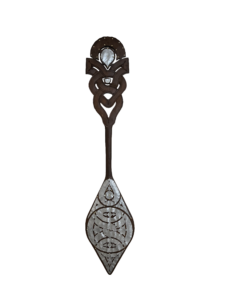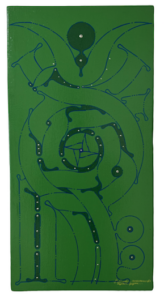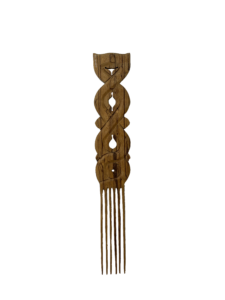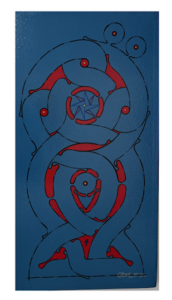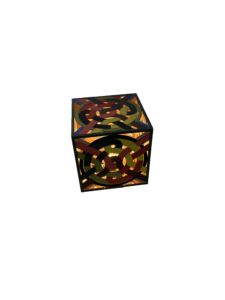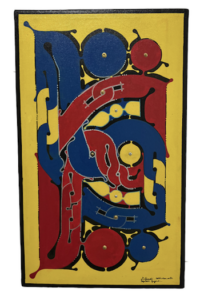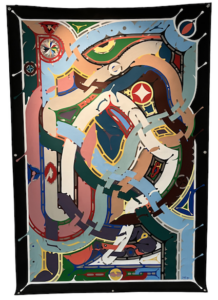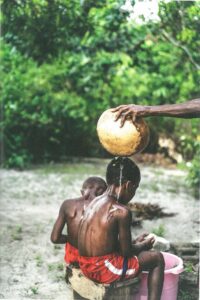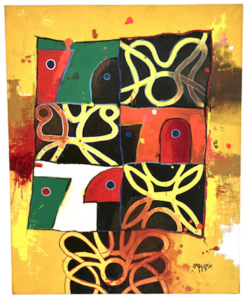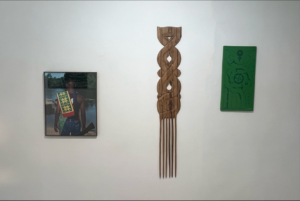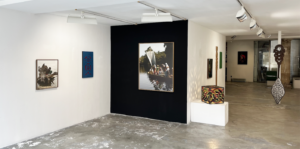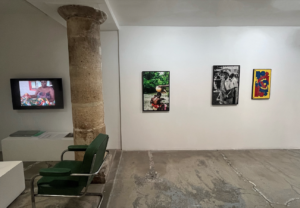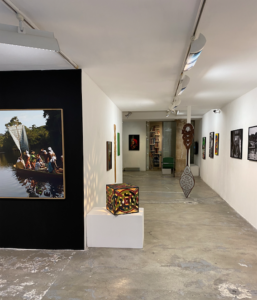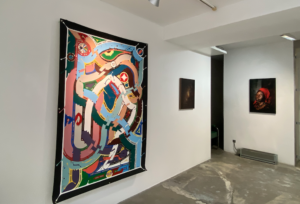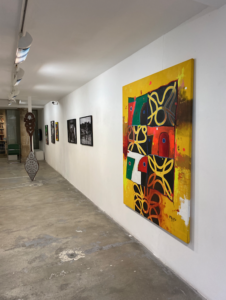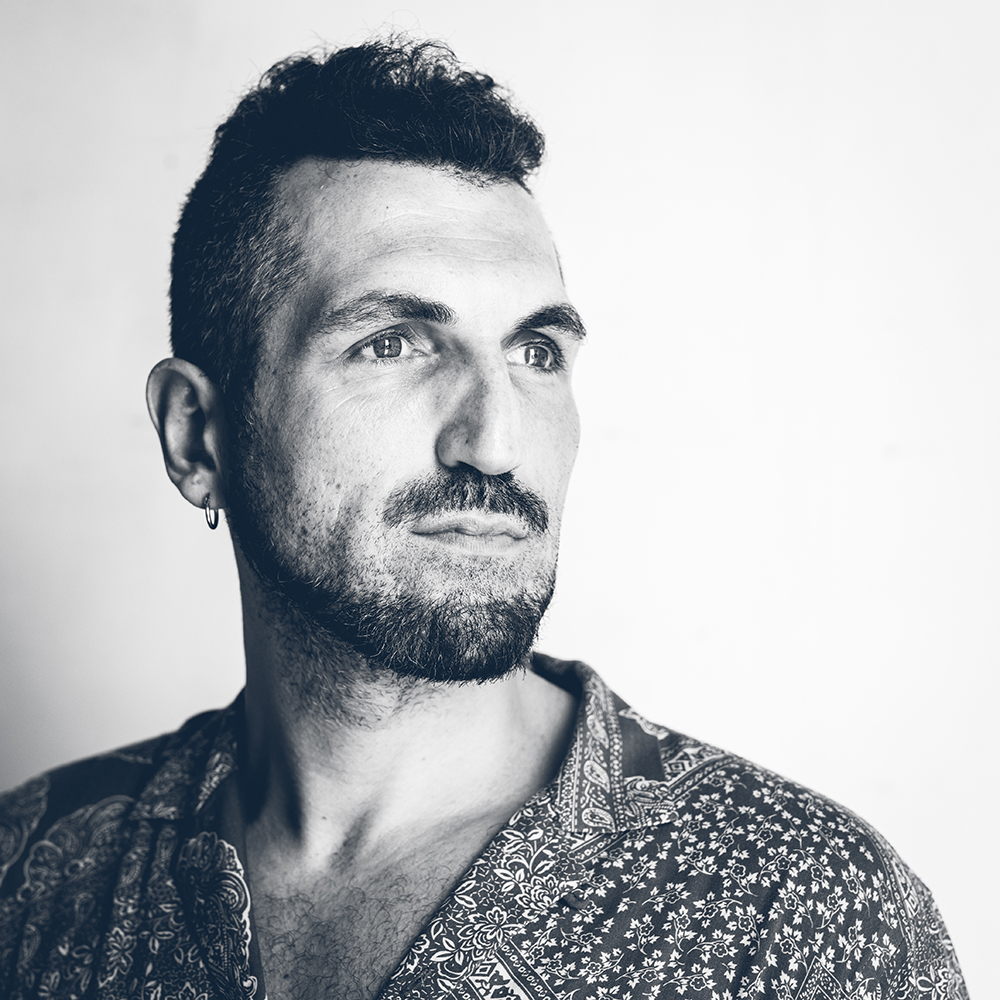EXPLORER
Carlos Adaoudé, Franky Amete, Karl Joseph, Nicola Lo Calzo, Ramon Ngwete, Gerno Odang, Marcel Pinas
curator Thomas Mouzard
In memoriam Hervé Télémaque (1937-2022 )
The artworks presented in this exhibition are part of the still largely unknown history of marronage in Suriname and French Guyana.
In the former Dutch colony, the escape of the «slaves» from the plantations led to the creation of several communities in the 17th century, protected by the Amazon forest. As campaigns proved too costly, the colonial authorities concluded treaties with the Maroons (Saamaka, Djuka) in the mid-18th century, recognising them as free subjects. In Guiana, France did the same for the Boni in 1860. Originating from different African peoples, these women and men recomposed collectives with original institutions in Amazonia.
Once peace had returned, they invented an art of interlacing, geometric poetry inseparable from the artefacts that each of them produced for themselves and their loved ones: the front of a house, a pirogue, a paddle, a comb, a drum, etc. Initially sculpted and engraved, the Tembe was coloured in the second half of the 20th century, until it was transferred to canvas.
The drypoint compass uses a vast repertoire of motifs, whose names can make sense. From relief to colour, optical virtuosity plays with light.
Marcel Pinas trained in art school in Paramaribo, then in Kingston, before founding the Tembe Art Studio in Suriname. His installations and paintings, in which, as in Letitembe, we find the syllabary invented by Afaka Atumisi at the beginning of the 20th century to transcribe a Maroon language, have largely contributed to the recognition of the Tembe in the contemporary art world.
Carlos Adaoude learned to carve and trace the Koti Tembe, especially with his father, and is already the sixth generation of Tembeman. He also learned from his elder Franky Amete, who developed the Tembe on canvas (Fer Tembe) in the 1990s. Both of them are once again renewing the Tembe, and this time freeing it from symmetry, expanding its polychromy, bringing it to other sup- ports, inserting it into design, rubbing it against the digital, making it monumental, propelling it into galleries and contemporary art fairs, continuing to draw their vanishing lines with a drypoint compass.
To their elders who reproach them for not knowing how to draw the Tembe, their younger siblings, who have chosen photography, reply «We sculpt light». Gerno Odang shows the descendants of Maroons in the cities, participants in the social movement of March 2017 in Cayenne.
Ramon Ngwete, passing through his ancestral lands, offers us the look of these mothers as they prepare to travel on the Tapanahoni River (a tributary of the Maroni that marks the border between Suriname and Guyana).
In this way we meet the first generation of Maroon photographers, so many decades after the photographs of ethnologists such as Jean Hurault or Pierre Verger.
We owe it to photographer Karl Joseph, himself a child of Guyana, to have spotted and encouraged these young photographers to exhibit their work on the artistic scene, including the Rencontres photographiques de Guyane, of which he is a co-founder. Here he presents a portrait of Ma Atema, Obieoeman.
Obia is a word from the Akan language (West Africa) that refers to the politico-religious system of the Maroon people. Obia is the title that Nicola Lo Calzo chose to give to his work in Guyana, a stage in the long-term Cham project on the living memories of slavery and the anti-slavery struggle in the Atlantic world.
Thomas Mouzard, February 2023
Bibliography
Mouzard Thomas & Geneviève Wiels, Marronnage, l’art de briser ses chaînes, 2021, Paris : Loco (catalogue exposition Maisond e l’Amérique latine 12 mai - 24 septembre 2022
Joseph Karl, Les Guyanais, 2011, Matoury : Ibis rouge.
Lo Calzo Nicola, Obia, 2015, Berlin : Kehrer Heidelberg.
Pinas Marcel, Maracel Pinas artist more than an artist, 2011, LE Prinsebeek : Jap Sam Books. Price Sally & Richard Price, Les Arts des Marrons, 2005, La Roque d’Anthéron :Vents d’ailleurs. Touam Bona Dénètem, Fugitif où cours-tu ?, 2016, Paris : puf.
